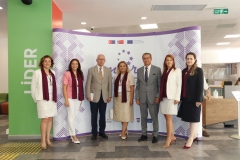
FACULTY OF COMMUNICATION
Department of Public Relations and Advertising
PRA 370 | Course Introduction and Application Information
| Course Name |
Creativity in Brand Communication
|
|
Code
|
Semester
|
Theory
(hour/week) |
Application/Lab
(hour/week) |
Local Credits
|
ECTS
|
|
PRA 370
|
Fall/Spring
|
3
|
0
|
3
|
5
|
| Prerequisites |
None
|
|||||
| Course Language |
English
|
|||||
| Course Type |
Elective
|
|||||
| Course Level |
First Cycle
|
|||||
| Mode of Delivery | Online | |||||
| Teaching Methods and Techniques of the Course | DiscussionGroup WorkProblem SolvingCase StudyQ&ACritical feedbackJuryLecture / Presentation | |||||
| Course Coordinator | - | |||||
| Course Lecturer(s) | ||||||
| Assistant(s) | - | |||||
| Course Objectives | To introduce a comprehension of the strategic relationship between brands and creative branding process. The course will provide students with the creative nature of brand insights and branding process. |
| Learning Outcomes |
The students who succeeded in this course;
|
| Course Description | The course demonstrates a creative insight into the context and contemporary environment of branding and brand communication process through a series of case studies, lectures and in-class activities and developing and finalizing Individual professional portfolio. |
|
|
Core Courses | |
| Major Area Courses | ||
| Supportive Courses |
X
|
|
| Media and Management Skills Courses | ||
| Transferable Skill Courses |
WEEKLY SUBJECTS AND RELATED PREPARATION STUDIES
| Week | Subjects | Related Preparation |
| 1 | Introduction | |
| 2 | The Energy of Connection: your customers’ search for meaning. | Sutherland, C. (2017). Creating Brand Energy. ebook, pp.16-28 |
| 3 | The Energy Cycle: basic units of experience | Sutherland, C. (2017). Creating Brand Energy. ebook, pp.29-41 |
| 4 | The Brand Creation Process: defining a business self | Sutherland, C. (2017). Creating Brand Energy. ebook, pp. 42-52 |
| 5 | Your Purpose: your energy charge/ Your Values: your energy’s fuel | Sutherland, C. (2017). Creating Brand Energy. ebook, pp.62-79 |
| 6 | Your Personality: your energy style/Your Product: your connection point | Sutherland, C. (2017). Creating Brand Energy. ebook, pp.80-88 |
| 7 | The Brand Creation Cycle: a summary | Sutherland, C. (2017). Creating Brand Energy. ebook, pp.216-219 |
| 8 | Creative Thinking Techniques / Brain storming | |
| 9 | Creative Thinking Techniques / Mind Mapping | https://tonybuzan.com/ |
| 10 | Advertising Appeals | Ruiz, S., & Sicilia, M. (2004). The impact of cognitive and/or affective processing styles on consumer response to advertising appeals. Journal of business Research, 57(6), 657-664. / Dens, N., & De Pelsmacker, P. (2010). Consumer response to different advertising appeals for new products: The moderating influence of branding strategy and product category involvement. Journal of Brand Management, 18(1), 50-65. |
| 11 | Midterm | |
| 12 | Storytelling | Campbell, J. (2012). The Hero with A Thousand Faces (The Collected Works of Joseph Campbell), 3rd Edition. New World Library, USA |
| 13 | Case study | Creative brand communication examples |
| 14 | Case study | Creative brand communication examples |
| 15 | Semester review | |
| 16 | Final |
| Course Notes/Textbooks | Sutherland, C. (2017). Creating Brand Energy. ebook, ISBN 9780646529738 |
| Suggested Readings/Materials | Paul Arden, Whatever You Think Think The Opposite, Penguin UK (March 2006), ISBN 0141025719 /// Eric Maisel, The Creativity Book - a year’s worth of inspiration and guidance, Torcher Putnam (June 2000), ISBN 1585420298 /// Diane Barth, Day Dreaming - Unlock the Creative Power of Your Mind, Penguin (1997), ISBN 014025031X /// Jack Foster, How to Get Ideas, Berrett-Koehler (October 1996), ISBN 15765006X /// Joey Reiman, Thinking for a Living - Creating Ideas that Revitalize Your Business, Career & Life, Longstreet (1998), ISBN1563524694 |
EVALUATION SYSTEM
| Semester Activities | Number | Weigthing |
| Participation |
1
|
10
|
| Laboratory / Application | ||
| Field Work | ||
| Quizzes / Studio Critiques | ||
| Portfolio | ||
| Homework / Assignments |
2
|
20
|
| Presentation / Jury | ||
| Project | ||
| Seminar / Workshop | ||
| Oral Exams | ||
| Midterm |
1
|
30
|
| Final Exam |
1
|
40
|
| Total |
| Weighting of Semester Activities on the Final Grade |
4
|
60
|
| Weighting of End-of-Semester Activities on the Final Grade |
1
|
40
|
| Total |
ECTS / WORKLOAD TABLE
| Semester Activities | Number | Duration (Hours) | Workload |
|---|---|---|---|
| Theoretical Course Hours (Including exam week: 16 x total hours) |
16
|
3
|
48
|
| Laboratory / Application Hours (Including exam week: '.16.' x total hours) |
16
|
0
|
|
| Study Hours Out of Class |
9
|
2
|
18
|
| Field Work |
0
|
||
| Quizzes / Studio Critiques |
0
|
||
| Portfolio |
0
|
||
| Homework / Assignments |
2
|
12
|
24
|
| Presentation / Jury |
0
|
||
| Project |
0
|
||
| Seminar / Workshop |
0
|
||
| Oral Exam |
0
|
||
| Midterms |
1
|
25
|
25
|
| Final Exam |
1
|
35
|
35
|
| Total |
150
|
COURSE LEARNING OUTCOMES AND PROGRAM QUALIFICATIONS RELATIONSHIP
|
#
|
Program Competencies/Outcomes |
* Contribution Level
|
||||
|
1
|
2
|
3
|
4
|
5
|
||
| 1 | To be able to critically interpret theories, concepts, methods, instruments and ideas that form the basis of Public Relations and Advertising field. |
|||||
| 2 | To be able to collect and use necessary data to produce content in the field of Public Relations and Advertising with scientific methods. |
|||||
| 3 | To be able to use theoretical knowledge gained in the field of Public Relations and Advertising in practice. |
X | ||||
| 4 | To be able to use analytical thinking skills in the field of Public Relations and Advertising. |
|||||
| 5 | To be able to convey creative ideas and solution suggestions supported by scientific data in written and oral form to stakeholders. |
X | ||||
| 6 | To be able to take responsibility as individual and group members to solve problems encountered in the practice of Public Relations and Advertising field. |
X | ||||
| 7 | To be able to develop solutions that favor public good and raise awareness by having knowledge about regional, national and global issues and problems. |
X | ||||
| 8 | To be able to relate the basic knowledge of other disciplines supporting the field of Public Relations and Advertising with his/her own field of expertise. |
X | ||||
| 9 | To be able to use the knowledge, skills and competencies acquired by following regulations, innovations, changes, current developments, and occupational health and safety practices closely in the field of Public Relations and Advertising; in a lifelong manner and for individual and social purposes. |
|||||
| 10 | To be able to collect, interpret and share data by considering social, scientific and professional ethical values in the field of Public Relations and Advertising. |
|||||
| 11 | To be able to collect data in the areas of Public Relations and Advertising and communicate with colleagues in a foreign language ("European Language Portfolio Global Scale", Level B1) |
|||||
| 12 | To be able to speak a second foreign at a medium level of fluency efficiently. |
|||||
| 13 | To be able to relate the knowledge accumulated throughout the human history to their field of expertise. |
|||||
*1 Lowest, 2 Low, 3 Average, 4 High, 5 Highest
NEWS |ALL NEWS
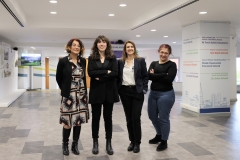
1.3 million support from TUBITAK for the exemplary project
4 academics from Izmir University of Economics (IUE) took action on the increase in natural disasters such as floods, fires, tornadoes and
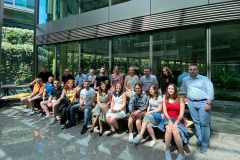
7 industrial visits in 3 days
Izmir University of Economics (IUE) Department of Public Relations and Advertising organized an industrial visit to Istanbul for its students to offer
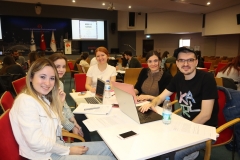
‘Kindness in Communication’ ideas by IUE students
Students of Department of Public Relations and Advertising, Izmir University of Economics (IUE) developed creative ideas for a world-famous tire brand (Continental)

‘Kindness in Communication’ ideas by IUE students
Students of Department of Public Relations and Advertising, Izmir University of Economics (IUE) developed creative ideas for a world-famous tire brand (Continental)
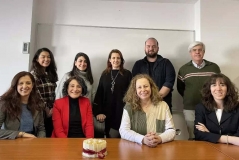
Our department, which was accredited by the Communication Research Association (ILAD) in 2020, successfully completed the interim evaluation process and was entitled to a total of five years of accreditation.
ILAD, the national quality assurance institution authorized by the Higher Education Quality Board (YÖKAK) for communication education, accredited our Public Relations and
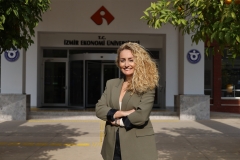
IUE graduate academic at a world-renowned university
Lena Çavuşoğlu, a graduate of Izmir University of Economics (IUE), pursued her dreams about having an academic career abroad instead of working

'International' cooperation of Izmir University of Economics
Izmir University of Economics (IUE) Department of Public Relations and Advertising took another important step towards internationalization and collaborated with the famous

